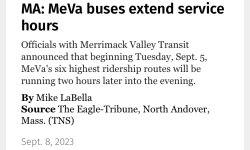Part III
(This one might be a little off topic for this thread but relates to the MBTA and MassDOT)
Statewide Transit
While Boston itself is seeing major tribulations, the state itself is experiencing relative strides in non-car transportation. The most recent good news being the approval of $108mil federal dollars for WOR-SPG rail corridor improvements, but there have been many smaller positives in the background.
First I want to debunk the idea that “90% of people in the state drive to work due to the state of public transportation.” That’s far from the truth. Statewide only 68% of commuters do so regularly by driving alone. This is followed by public transit as the second highest modeshare at 9.5%. Also important to note is a recent MassDOT survey found that over half of respondents would like to be able to bike to work if it was safe to do so. People are very willing to ditch the drive if they can do so safely and reliably, and nearly a million do every day statewide even with the current state of things.
To facilitate safe and reliable alternative transportation to driving, the state recently added cycling provision guidelines to all new state roadway construction and reconstruction. This is already going into effect on projects in Newton, Agawam, and Boston, where state route construction projects are bringing separated and protected bike infrastructure to streets and roads. On top of this, a new attitude is being taken towards the RTAs with annual funding nearly doubling for the next fiscal year. Multiple RTAs are already taking advantage of this planning extended service hours and introducing new Sunday service. MeVa in particular got ahead of the curve increasing wages, hiring new staff, reducing headways, improving bus stops, and now are extending service hours. The PVTA on the other hand is leading the state in reducing transit emissions with BEB infrastructure that has actually been working decently so far (this is not an endorsement of BEBs), not to mention the success of the Hartford Line though that’s more a CT thing.
Back in the East, Fall River is all in on removing SR79 hopefully paving the way for the same to be considered for Route 18 in New Bedford. The two cities are also going to see SCR start the new year off connected them with Boston in a way other than the ever-congested I-93. With the new rail connections comes new pedestrian and bike infrastructure that will benefit people of these cities. The same is being seen in cities and towns served by the T and those not. Politicians and the wider public are starting to come around to safer transportation for all not just those in cars.
Boston isn’t the whole state. While it’s been struggling after mismanagement the rest of the state is changing for the better when it comes to transportation. Things are looking up.

